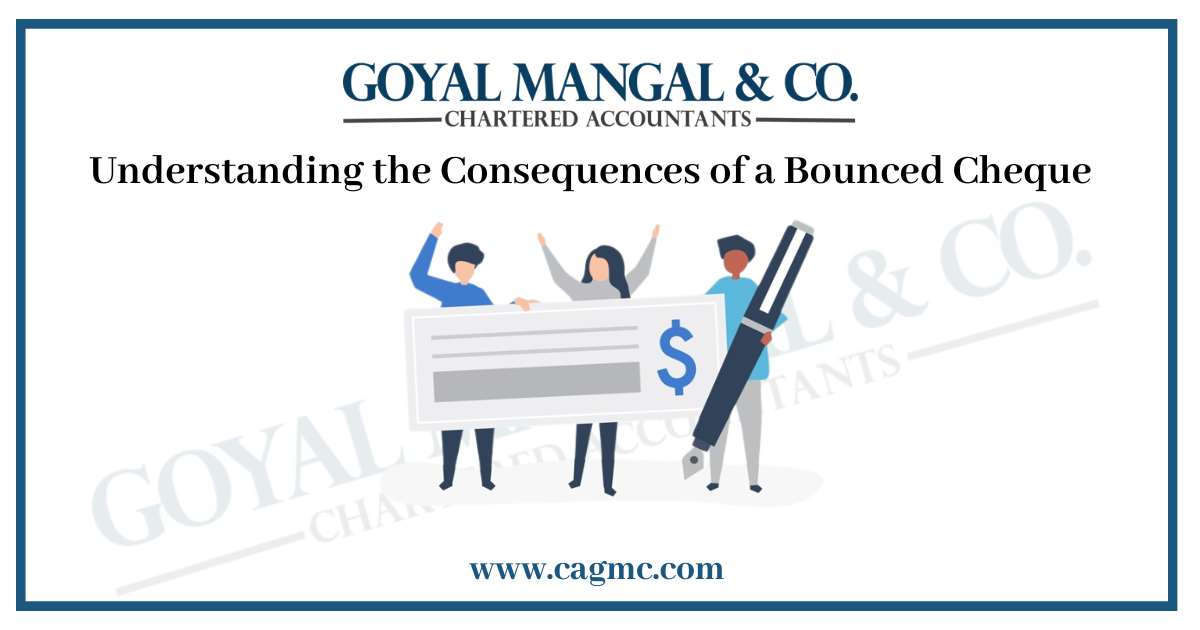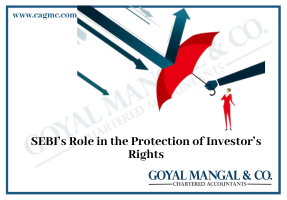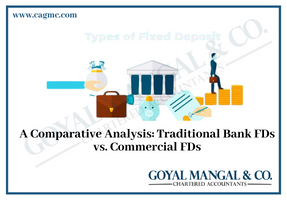
We no longer carry large amounts of cash and instead rely on secure online payment systems like UPI. Since the maximum amount of a UPI transaction is limited, cheques remain an option for making large purchases. Understanding the Consequences of a Bounced Cheque and What are the strategies for defending against a case involving a bounced cheque. it might be quite costly and inconvenient for us. Here we’ll look at what is cheque bounce, what the associated fees are, how to dispute a bounced check, whether there are any exceptions, and what the legal consequences might be.
Table of Contents
Meaning of cheque bounce
The word “cheque bouncing” refers to a situation where the issuer of a cheque lacks sufficient funds in their bank account, hence the recipient is unable to receive the funds from that specified cheque. There are other factors that can contribute to this occurrence, including cheque bounce due to insufficient balance, the closure of the account, or other complications pertaining to the drawer’s bank account.
Reasons for Cheque Bounce
The following are the prevalent causes for the occurrence of cheque bounce incidents in India:
- If the drawing party possesses an inadequate amount to fulfil the payment specified on the cheque, it is expected that the financial institution will decline the cheque.
- Overlapping can lead to cheque bounce. The concept of overlapping refers to the occurrence of shared or common elements between different entities or phenomena
- The check becomes void or invalid if there are any alterations or modifications made to the signature of the drawer, the amount written on the check, or any other indications present on the check.
- The Understanding the Consequences of a Bounced Cheque, Cheque bounce Validity period is cheque need to be submitted within 3 months otherwise it will bounce.
- If the drawer’s signature is absent or illegible, or does not correspond to the bank’s record, the cheque may be deemed invalid.
- The term “distorted cheque” refers to a financial instrument that has been altered or manipulated in a way that deviates from its
- A check has the potential to be dishonoured if it becomes distorted or damaged, rendering the information unreadable, or if it bears stains or markings.
- The discrepancy between numerical data and textual information.
- The check will be declined if there is a discrepancy between the numerical and textual information on the check.
Additional potential issues may involve discrepancies with the cheque’s date, inaccuracies in the amount or account number, a cheque that has expired, or a locked account belonging to the drawer. Additional Understanding the Consequences of a Bounced Cheque and considerations may encompass matters pertaining to payment.
The accessibility of the company’s seed on the cheque, the presence of a suspicious cheque, the potential implications of the drawers’ mental instability or demise, and any instances of unauthorized markings on the cheque are among the factors to consider.
What happens if a cheque bounces in India?
- Bank penalty: In the event of a bounced cheque, both the individual who issued the cheque and the recipient of the cheque incur cheque bounce charges from their respective financial institutions. If a cheque is returned due to insufficient funds for loan repayment, the borrower would be required to pay both overdue payment costs and cheque bounce penalty fees imposed by the bank. One potential strategy to prevent the occurrence of a bounced cheque is to utilize a cheque issued from an overdraft (OD) account.
- Financial credit history: If an individual seeks to obtain a home loan and encounters a situation where the processing fee cheque is returned unpaid, it is possible for the bank to promptly decline the approved loan. Additionally, Understanding the Consequences of a Bounced Cheque, the occurrence of repeated instances of bounced checks can have a detrimental impact on your financial credit history, hence posing challenges in obtaining loans in subsequent periods.
- Criminal charges: In instances of dishonoured cheques, if the matter has been registered under Section 420 of the law, it is possible for a non-bailable warrant to be issued against the individual who issued or paid the cheque. However, to commence legal procedures under this article, it is necessary to establish and substantiate a case of fraudulent activity against the party issuing the alleged deceitful act.
- Civil suit: In the context of a cheque bounce case, it is commonly observed that individuals opt to initiate a distinct civil suit for money recovery. This course of action is pursued due to the limited efficacy of filing a criminal case in facilitating the retrieval of outstanding dues. The civil suit encompasses the expenses incurred and the interest lost because of the bounced cheque. If a case is initiated under Section 138 of the Negotiable Instruments (Amendment) Act.
The Guidelines for Proper Conduct Regarding Cheque Bounce
- It is imperative to refrain from modifying the monetary value of a cheque after its receipt.
- It is essential to refrain from modifying the date once it has been inscribed on the cheque.
- The check must possess legal enforceability within the jurisdiction.
- The check must have been presented within its validity period of three months.
- It is highly recommended to engage the services of legal counsel, particularly when initiating the process of submitting a demand notice within the prescribed timeframe of 30 days after dishonour.
Exceptions to Cheque Bounce Notice
In instances where a check is issued in the name of a charitable trust as a payment or contribution, it will not be subject to dishonour. In instances where there are slight alterations made to a cheque, banks possess the discretion to overlook minor errors. However, financial institutions may potentially levy penalties for such actions.
What are the strategies for defending against a case involving a bounced cheque?
To start legal actions under Section 138 of the National Intelligence Act (NIA), Understanding the Consequences of a Bounced Cheque, you must meet these requirements:
- The bank should receive the cheque within three months after issuance or its validity. Previously, cheques were valid for six months. However, the Reserve Bank of India issued Notification No. RBI/2011-12/251DBOD.AML BC.No.47/14.01.001/2011-12 to limit the validity period to three months from April 1, 2012.
- On the first failed cheque, the bank issues a ‘Cheque Return charges Memo’ explaining the non-payment. The cheque’s owner must then pay the bank within three months of the cheque’s date.
- The bank is implementing payee notifications. After receiving information from the bank about the failed check clearance, a payee must notify the payer or defaulter within 30 days to request payment. Subsequently
- If the payer fails to pay within 30 days of receiving the dishonour notice. subsequently,
All three requirements must be met to file a case under Section 138 of the Negotiable Instruments Act (NIA).
Final words
In conclusion, Understanding the Consequences of a Bounced Cheque, when a cheque bounces, it can result in a series of consequences for both the issuer and the recipient. For the issuer, this typically includes penalty fees, a damaged credit rating, and potential legal action. On the recipient’s end, it can lead to financial strain, delayed payments, and a need to pursue legal remedies to recover the owed funds. To avoid these complications, it’s essential for individuals and businesses to maintain sufficient funds in their accounts and exercise caution when issuing cheques. Clear communication and prompt resolution of bounced cheque issues are key to minimizing the impact of such situations.







